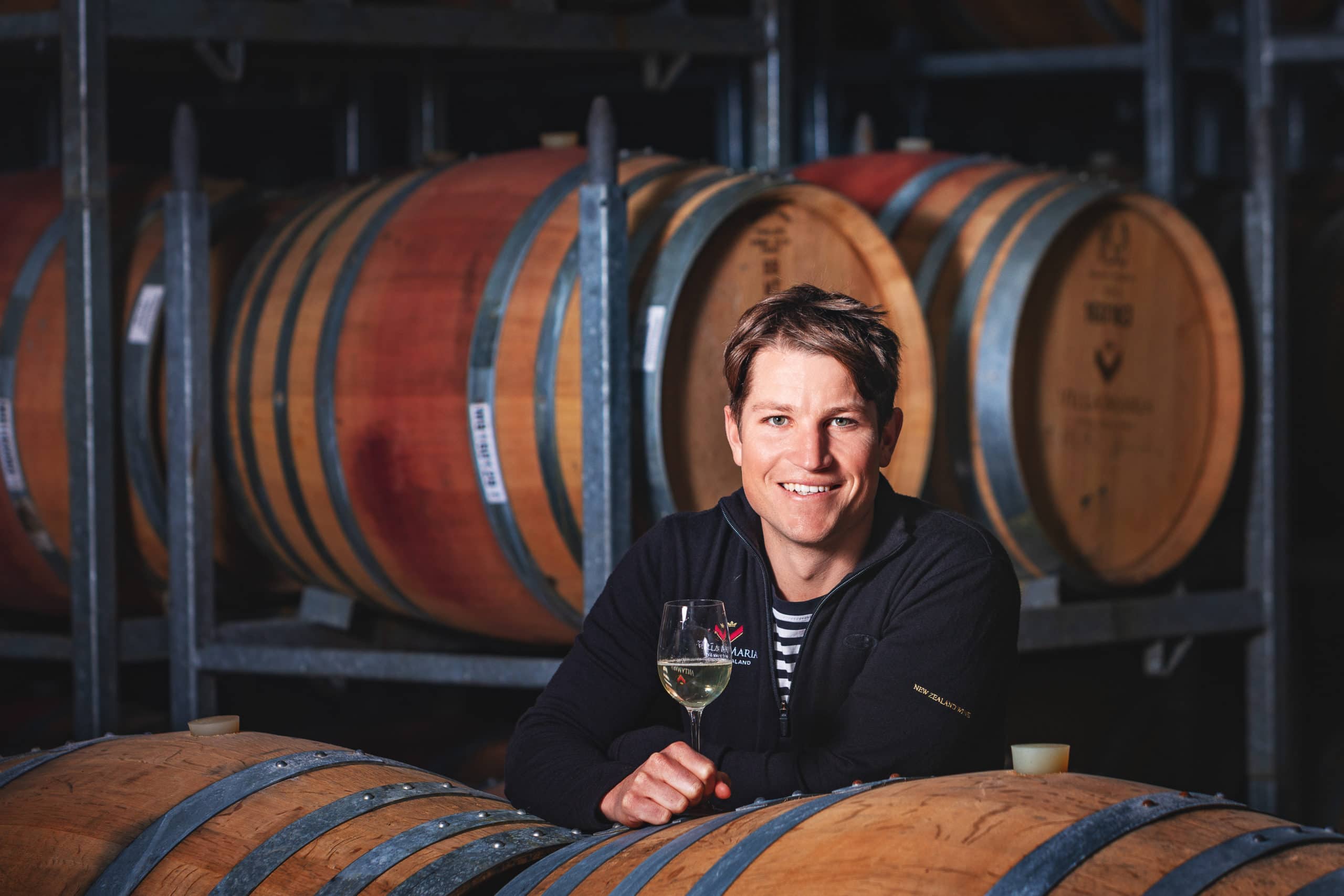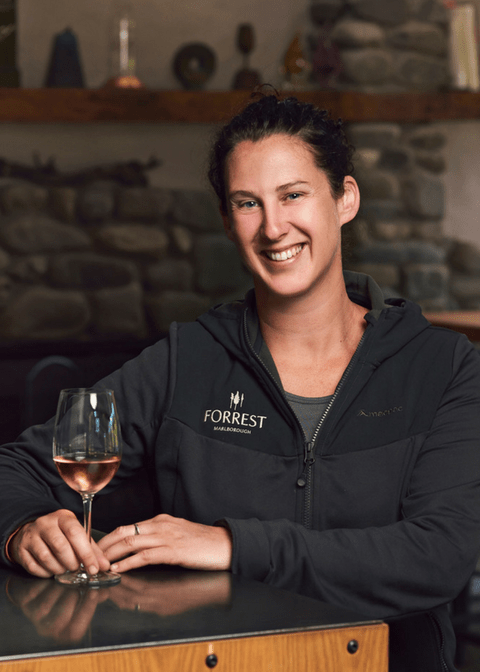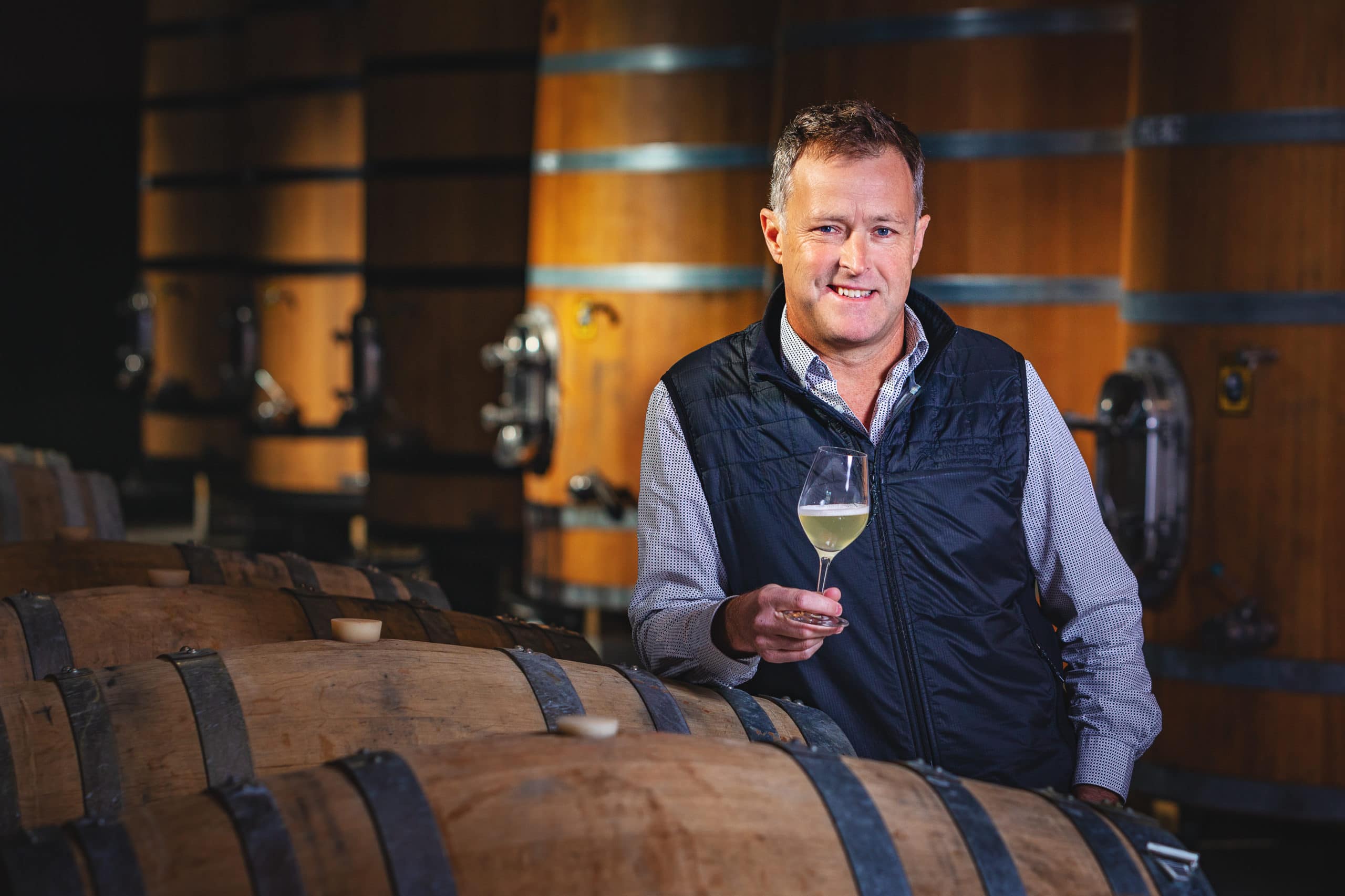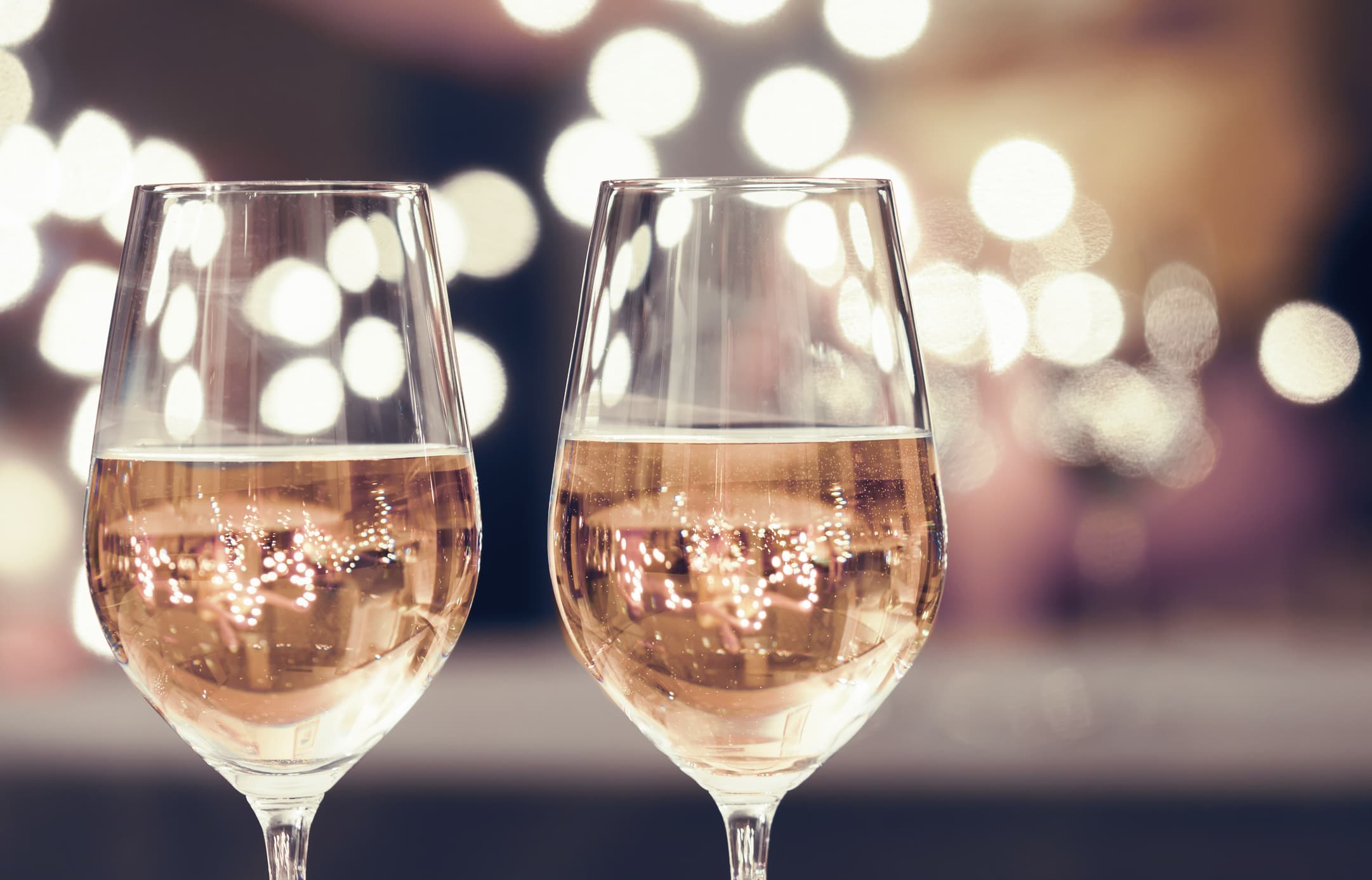NZ LIGHTER WINES
Winemaking Options for Lighter Wines
Although Grape Day 2018 was winding down in Blenheim, Villa Maria winemaker Tom Dixon had no trouble holding the audience’s attention during his presentation outlining the company’s four years of experimentation into the production of lighter-in-alcohol wines.
Entitled “The moderation trend requires more than moderate effort,” Dixon’s presentation summed up Villa’s multipronged approach. “Naturally producing the range of Villa Maria lighter wines is our ultimate goal,” he concluded, “but, in reality, this natural concept is easier to say than it is to achieve using our existing viticulture and winemaking processes.”
Villa Maria is one of 18 companies participating in NZ Lighter Wines, a seven-year research and development programme established by New Zealand Winegrowers and co-funded under the Ministry for Primary Industries’ Primary Growth Partnership (PGP).
The largest research and development initiative ever undertaken by the New Zealand wine industry, NZ Lighter Wines focuses on the production of wines that typically are 10% or less alcohol by volume (ABV) and often have 25% less alcohol than their full-strength equivalents. The challenge is not simply to produce lighter-in-alcohol wines that are high quality, but to naturally lower the alcohol content without compromising what New Zealand is famous for – full-flavoured, varietally expressive, premium wines.
VINEYARD, WINERY AND BEYOND
The $17-million programme began in 2014 and Villa Maria, like many of the participating companies, has invested considerable time and money into tackling these formidable goals, starting with applied research in the vineyard and continuing through to the winery and beyond, including sensory analysis and achieving the market access required to drive export growth.
From the start, the programme has emphasised the fundamental contribution that natural and sustainable viticultural techniques can make to producing wines that are lower in alcohol.
It turns out, however, there is still much to explore in the winery itself, and the three case studies that follow highlight the ongoing experimentation under way at Villa Maria, Forrest Wines and Pernod Ricard New Zealand.
NZ Lighter Wines Programme Manager Dr David Jordan says the rapid-fire experimentation seen at these companies provides yet another illustration that “lighter” does not mean “simpler” or “lesser”.
“Our industry partners have energetically explored a range of approaches for the production of lighter wines, and the innovation by no means stops in the vineyard,” he adds.
One hallmark of the programme is the willingness to share individual approaches among the participating wineries and beyond – to the industry at large, via technical events such as Grape Days and the Romeo Bragato industry conference.
“That spirit of ‘co-innovation’ has been apparent from the very beginning and has proven powerful in terms of amplifying ideas,” says Jordan. “The New Zealand wine industry has often been singled out for its highly collaborative nature, and Lighter Wines reflects those values as we develop what is essentially an entirely new category.”
INNOVATION AT VILLA MARIA
Why make lighter wines? According to Tom Dixon, Marlborough winemaker at Villa Maria, “that has to be the most-asked question from wine industry professionals not currently involved in the lighter alcohol category.”
The company produces a lighter Rosé, Sauvignon Blanc and Pinot Gris (all labelled as “Villa Maria Private Bin”)aking at the 2018 Grape Day in Blenheim, Dixon noted that the Lighter Wines programme was a good fit for Villa Maria, given that many of the tools developed could be applied to grape-growing and winemaking for any category. In addition, however, the strong growth the category has enjoyed among New Zealand consumers has provided another incentive, given that the domestic market contributes approximately 25% of Villa Maria’s sales.
Dixon noted that site selection, harvest dates and vine trimming have been explored in some depth, and he highlighted the canopy manipulation techniques pioneered by John Forrest at Forrest Wines (explored in the 2017 article, “Vine Options”). The approach has been freely shared by Forrest within the NZ Lighter Wines programme, and research has continued in different regions with additional trials on different varieties.
Initially, Villa’s Sauvignon Blanc and Pinot Gris were produced from Marlborough grapes and the Rosé from Hawke’s Bay fruit, but Dixon noted that one of the biggest challenges in producing lighter wines is managing the typically high acidities. “More recently, we have sourced fruit for our lighter Pinot Gris from Gisborne, which has shown to be much better suited to achieving flavourful and textural wines at lower alcohol.”
Site, variety and clone selections have evolved at Villa Maria since the inception of the Lighter Wines programme, said Dixon. The lighter Sauvignon Blanc, for example, started as a blend from five separate vineyards across Marlborough to just two in more recent vintages – the Awatere valley and an exposed slope in Brancott.
Similarly, the composition of Villa’s award-winning lighter Rosé has changed over time.
“We started by making a lighter Rosé along similar lines to the way we made our regular-strength Rosé,” he added. “Over time, however, we began to think that a Merlot-dominant wine might not be the best way to go. We’ve gone from a blend of 60% Pinot Gris and 40% Merlot, both from Hawke’s Bay, to a blend of Pinot Noir, Pinot Gris and Merlot, with Merlot comprising only 25% of the blend in 2017.”
PALATE WEIGHT AND FERMENTATION
In the case of both the lighter Sauvignon Blanc and the Pinot Gris, palate weight has proven challenging over multiple vintages.
“Lower alcohol and higher acid both contribute to a lack of palate weight and mouth feel compared to full-strength wines,” said Dixon. “That is one of the reasons underlying the higher residual sugar often found in lighter wines. Our ultimate goal is to achieve positive textural features without having to rely on sugar alone.”
To face those challenges, Villa winemakers have tested many weapons in the winemaker’s arsenal: skin contact (both in pre-press and fermentation), yeast selections (for reducing alcohol, flavour enhancement and degradation of malic acid), other softening and fining agents, selective use of seasoned barrels, and tweaking the end-of-ferment stage via chilling and other means.
Dixon said that Villa has conducted extensive trials with varying degrees of skin contact, with the aim of enhancing palate weight and aromatics through extraction of skin-based compounds. The results pre-press, where fruit is destemmed and left for up to 12 hours before pressing, have been used on lighter Pinot Gris and Sauvignon Blanc, and have also been useful in the production of standard-strength Sauvignon Blanc.
Yeast selections have been trialled to explore properties that include reduced alcohol, increased flavour and aromatics, degradation of malic acid and enhancing palate weight.
“In order to maintain varietal expression and style profiles that are comparable to our conventional wines, these yeasts are largely co-fermented with yeast used in our standard programme,” added Dixon. “The ability of some yeasts to metabolise malic acid during fermentation has been particularly useful.”
Barrel aging and barrel ferments, using seasoned barrels, have been explored to increase the lees contact area to help build complexity in the wines. And deactivated yeast products, mannoproteins and gum arabic have also been used as a “final polish” on lighter wines before bottling.
“There is also future opportunity with other varieties such as Riesling and styles such as sparkling wines,” Dixon summed up. “These advances and discoveries will benefit not only wines in the lighter category but wines of all styles and quality levels.”

Tom Dixon, Villa Maria winemaker, notes that the concept of natural production of lighter wines is “easier to say than to achieve.”
Photo by Jim Tannock
NATURAL EVOLUTION AT FORREST WINES
Although the NZ Lighter Wines programme recently entered its fifth year, research into lower alcohol at Forrest Wines has been going on for twice as long – more than 11 years and counting.
Widely recognised within the wine industry for his pioneering efforts with “The Doctors’” lighter-in-alcohol brand, company founder and winemaker Dr John Forrest launched The Doctors’ Riesling in 2006 out of his passion to make a Kabinett-style wine, using the minerality of the river gravels in Marlborough as a counterweight to the slates of the Mosel Valley in Germany.
Describing those early efforts at the 2017 Romeo Bragato Conference in Blenheim, company winemaker Beth Forrest (daughter of founders John and Brigid) recalled, “What tweaked John’s interest was that people were commenting about the lower alcohol of The Doctors’ Riesling. They liked the style, the taste, the flavour, and they really liked that it was lower in alcohol.”
LIGHTER, NOT LESSER
From there began a wide-ranging study of applications that might enable Forrest to produce lighter-in-alcohol wines that still offered “what everybody wants to drink”. First came trials to pick Sauvignon Blanc at lower sugar levels around 18 Brix. But with high acidity, unripe flavours and a thin palate, the resulting wine did not meet their objectives, said Beth Forrest.
Site selection offered some improvement, she added, with a vineyard on the northern side of the Wairau providing vibrant, riper flavour components at naturally lower sugar levels.
Picking early to keep Brix low still presented challenges, however, especially the higher acidity, obviously unripe flavours and thin palate of the finished wine. But, Forrest continued, in 2007 she and John experienced an “aha” moment while attending the International Riesling Symposium in the Rheingau, Germany. Dr Hans Schultz – “the last presentation on the last day of the symposium” – outlined an avenue of research that seemed worthy of exploration back home in Marlborough.
“Selective leaf removal – taking away the highly active green leaf at the top of the canopy – sort of shocks the vine into slowing down,” explained Forrest. “That allows the flavour profiles a chance to catch up with the sugar instead of the sugar shooting through the roof.”
By 2010, their efforts were showing promising results. From 2011 to 2013, Forrest established further R&D trials, with funding from the Sustainable Farming Fund (Ministry for Primary Industries). With assistance from the PhD research of Dr Amber Parker (senior lecturer, Lincoln University) & Dr Mike Trought (principal scientist, Plant & Food Research), the project demonstrated that taking about six leaves out of the upper canopy slowed down sugar accumulation but allowed the classic flavour profile of Marlborough Sauvignon Blanc to continue to develop.
With the establishment of the NZ Lighter Wines programme in 2014, Forrest signed on as one of the 18 companies and immediately shared the results from the SFF project with all participants.
SCALING UP
The goal, according to Forrest, then changed from how to do it, to how to commercialise the production of lighter wines at Forrest. “The big driver from then on was to make it cost-effective, large scale, transferable across Marlborough sites and to produce wines that would win accolades.”
From the first attempts at Riesling and Sauvignon Blanc, the company has since explored other varieties and styles, including a Rosé and, from 2017, a Pinot Noir.
“We’ve also worked with Arneis, which was already planted in our vineyards. It’s naturally lower in acid and has great flavours,” said Forrest. “We often pick at just 16 Brix and it still has great varietal flavour.”
The winemaker’s toolbox has also become increasingly important to the process, she added, citing trials with various yeasts, mannoproteins, tannin supplements and oak.
“Pinot Noir is our new project in the vineyard and the winery,” Forrest said. “The naturally lower cropping nature of this variety makes it much harder to manipulate the canopy and it doesn’t have the same area of vegetative leaf growth that Sauvignon Blanc does.”
Nevertheless, following extensive work on leaf removal and cutting canes, the 2017 Doctors’ Pinot Noir showed “the possibility” of a lighter-in-alcohol contender, she said.
Since Forrest’s presentation at the 2017 Bragato Conference, the company has completed another vintage, and, more recently, has garnered remarkable export success in a series of new listings in the United Kingdom. The Doctors’ Marlborough Sauvignon Blanc is now available in Tesco, and Forrest has also placed a Sauvignon Blanc and Rosé with Marks & Spencer as own-label wines.
Widely interviewed by the press in the UK following the 2018 placements, Dr John Forrest cited the “startling progress” made by the NZ Lighter Wines programme.
“We are well ahead of other lower alcohol production methods,” he explained, “and lower alcohol wines are now winning medals in open class competitions up against standard wines.”

For Beth Forrest, winemaker at Forrest Estate, the challenge has changed from how to produce lighter wines to how to commercialise that production.
A LIGHTER TOUCH AT PERNOD RICARD
Another major player that has made a significant investment in developing a lighter-in-alcohol wine portfolio is Pernod Ricard New Zealand. Jamie Marfell, Marlborough winemaker at Stoneleigh, followed Beth Forrest’s presentation at the 2017 Romeo Bragato Conference in Blenheim with an insider’s glimpse into the Pernod approach to lighter wines.
The company has been making lighter-in-alcohol wines since 2012, producing three ranges in the category: “Montana Affinity”, “Stoneleigh Lighter” and “Brancott Flight”, each of which offers a range of varieties and styles, including Sauvignon Blanc, Pinot Gris, Riesling, Rosé and sparkling. The company joined the NZ Lighter Wines programme at its establishment.
“Our aim is to produce wines equal to or better than full strength,” Marfell noted, adding that the exploration has involved research into appellation (site), viticulture, harvest parameters, winery processing and winemaking.
At first, the company simply wanted to “get out there and run some trials” after sampling some of the early “outstanding” wines from Forrest, recalled Marfell.
Initially taking fruit from Rapaura, Lower Wairau and the Lower and Upper Awatere vineyards, the winemakers wanted to assess the role that site might play in the production of lighter wines. But four sites presented logistical challenges during the already pressurised harvest period.
“Making lower alcohol wines is very technical and there is only a small harvest window,” Marfell observed. “So, from an operational perspective, the 19-day spread in harvest dates was the last thing we wanted.”
From those early trials winemakers found they preferred wines off the Rapaura and Upper Awatere sites. “This surprised us, given the high methoxypyrazines from the Upper Awatere,” added Marfell.
Since then, Pernod has moved to source fruit for its lighter wines from an upper terrace, Kaituna vineyard, based on harvest logistics and style.
MANAGING MALO VIA YEAST SELECTION
Another early challenge concerned managing malic acid.
“We’re used to seeing high malic acid levels in Sauvignon Blanc, but when you’re seeing in the range of 7-8 grams of malic, you’re kind of in panic mode,” Marfell said. “So initially, we deacidified juice. Since then, we’ve learned to reduce those malic levels in our wine with yeast.”
In 2016, the company initiated canopy manipulation trials à la Forrest Wines, to see how that input would affect ripening.
“It did what might have been expected,” he said, “and delayed harvest by 20 days. That’s sort of the last thing wanted in a bigger winery – having lower alcohol fruit coming in in the middle of April was an absolute nightmare.”
More recently, the company has returned to an early-harvest regimen, based on a target Brix of 16.5 to 17 and supported by a three-day sampling plan that kicks in when the grapes are 1.5 Brix away from that target.
“Fruit ripens so fast through that picking window,” Marfell added, “and that’s something we’ve been caught out on. The sampling plan actually serves as a fantastic indicator of the rest of the harvest.”
Juice processing has proven to be another critical stage for ensuring wine quality. In-field additions of ascorbic acid followed by “all in” pressing with no skin contact are the preferred route at Pernod.
“We’re also really big on flotation, with minimal bentonite additions,” said Marfell. “We invested in this four to five years ago, and I think it’s been one of the big things for improving wine quality. We aim to have juice clarified, floats decanted and inoculated within 24 hours of harvest.”
As other winemakers have noted, yeast selection also plays an important role for Pernod’s lighter wines, helping the company to achieve significant reductions in malic acid (a 40% reduction for the 2017 vintage). Marfell explained that the company uses mixed cultures for everything, incorporating a wide range of commercial selections, along with a proprietary “terpene splitting” yeast.
“The terpene splitter comes out of France and turns on an appealing Muscat note. That’s sometimes quite handy, especially when you’re looking for that lift in Riesling and Pinot Gris,” he added.
Tight monitoring, getting the wines in early and achieving balanced wines are where it’s at, concluded Marfell. “We spend a lot of time on acid manipulation in the lab and adjusting to get the balance right. At the end of the day, we want a lighter wine to taste like a standard wine.”
Marfell believes that the company still has lessons to learn when it comes to how to make lighter wines from a technical point of view. But the category, he added, is here to stay:
“I see this as a serious segment in the marketplace. I think it will have a long-term play.”

Jamie Marfell, winemaker at Stoneleigh, picks yeast selection as one of the keys to lighter wine production because different cultures can help to reduce malic acid levels.
Photo by Jim Tannock
This article first appeared in the October / November 2018 issue of the New Zealand Winegrower magazine.

















